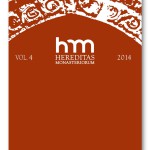O przeobrażeniach wizerunku Świętego Krzyża w XIX-wiecznych relacjach z podróży po Polsce
On the metamorphoses of the image of Święty Krzyż in 19th century accounts of tours of Poland
Author(s): Anna KurskaSubject(s): Literary Texts
Published by: Laboratoire de Recherches sur l'Histoire des Congregations et Ordres Religieux (LARHCOR)
Keywords: geopoetics; geocriticism; journey; Święty Krzyż (Mount Holy Cross); travelogue; sightseeing; Romanticism
Summary/Abstract: The article is an attempt to present – with reference to geopoetics and geocriticism – how 19th century accounts of trips to the Świętokrzyskie Mountains depicted Święty Krzyż (Mount Holy Cross, also known as Łysa Góra or Łysiec). The author follows a chronological approach to show more clearly the evolution of the image of the place and to capture the factors which influenced its metamorphosis. To this end, she uses accounts by Julian Ursyn Niemcewicz, Klementyna Hoffmanowa, née Tańska, Bohdan Dziekoński, Kazimierz Władysław Wójcicki, Oskar Flatt, Jadwiga Łuszczewska (Deotyma), Julian Bartoszewicz, Franciszek Maksymilian Sobieszczański, Antoni Brykczyński, Władysław Zapałowski, Józef Siemiradzki, Tadeusz Dybczyński, Paweł Bolesław Podczaszyński, Władysław Sierakowski, Michał Elwiro Andriolli, Franciszek Kostrzewski as well as anonymous travellers whose works were published in 19th century periodicals. The author reveals three strategies used to create representations of Święty Krzyż in the travelogues. The most common strategy is associated with the use of mythical and historical stories concerning the location. Using a poetic language, they were supposed not only to “conceal” the ruins of the church and the monastery situated on Łysa Góra, but also to create a new image of Święty Krzyż and restore its significance. Another approach reveals a relation between the site with its cultural tradition, and nature, the land and its scenery. This applies particularly to accounts by Wójcicki, Dziekoński, Flatt and Łuszczewska, who present diametrically opposed images: from gloomy representations to an epiphanic vision of Święty Krzyż, illuminated by the blaze of the rising sun. The third strategy is associated with an attempt to describe and reconstruct the appearance of some places situated on Święty Krzyż as well as the architecture and the interior of the church and the monastery. It is also about presenting the attitude of the travellers who were rather inattentive in exploring the material world around them, concentrating instead on their spiritual experience.
Journal: Hereditas Monasteriorum
- Issue Year: 2014
- Issue No: 4
- Page Range: 49-106
- Page Count: 58
- Language: Polish

